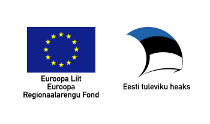The World’s Envy of Taxes
Although Estonians themselves say that no one is as envious as an Estonian toward another Estonian, this is not true. Finns for example surpass their southern neighbours in their envy.
For example, in Estonia, there are no so-called envy taxes. Income tax is not progressive, but flat. There is no inheritance tax, gift tax, or wealth tax. Property is not taxed in Estonia, and the same thing is not taxed multiple times by the state.
For instance, Finnish President Alexander Stubb said during his time as a minister that the “inheritance tax is essentially an envy tax, the dynamic effects of which on the economy are often negative.”
Some wealthy Finns have already “voted with their feet.” They have moved abroad. The most well-known of them is probably banker Björn Wahlroos. He is registered in Sweden, which does not have an inheritance tax.
In Finland, the flat tax is opposed with the argument that high earners pay too little. However, people often forget that even in a flat tax model, those who earn more still pay more in taxes than those who earn less.
The claim that “the rich don’t take part in the joint effort” is incorrect, especially considering that Finland has a progressive income tax system.
Estonia’s flat tax model means that regardless of income level, everyone pays tax at the same rate. Currently, income tax is 22 percent. The corporate income tax rate is zero if profits are retained within the company. When profits are distributed as dividends, corporate tax is paid on them.
The flat tax was introduced in 1994. Then-president Lennart Meri played a significant role in reforming the country’s economy in the early years of independence. The introduction of the flat tax was specifically an economic policy decision.
The model has never been seriously questioned, and a shift toward progressive income taxation in the near future does not seem likely. This is influenced by the fact that Estonia’s economic development has been very strong throughout its new independence. In Estonia, there is a belief that high taxation is a barrier to growth.
In addition to the flat tax model, Estonia also has other taxes, such as value-added tax (VAT), excise taxes (eg on alcohol, tobacco, and fuel), as well as unemployment and pension contributions. With the new vehicle tax law, all vehicle owners and users also pay tax on their vehicles.
Of course, the lowest-income and most vulnerable people need support. However, this can be done through various benefits and allowances. But if the entire tax system is based on ensuring that everyone ends up with roughly the same amount after taxes, it does not encourage extra work. Quite the opposite.
In Finland, for example, many doctors have reduced their working hours or turned their practices into companies. This is possible in a few select professions, but for the average wage earner, it is not possible.
Moreover, it is very difficult to attract foreign experts to a country where taxes consume the lion’s share of salaries.
Estonia’s economic development over the past 30 years has been remarkably fast. Of course, this has accelerated inflation, but even now, Estonian wages are on a European level. In 2024, the average salary was already over 2000 euros per month.
In Estonia, self-made entrepreneurs are admired. Wealth and success are not seen as a curse. The country has already produced several unicorns—companies valued at over a billion euros. Successful people are not hated or despised, and there are no efforts to curb work ethic or ambition through higher taxes.
Estonia has a very well-functioning healthcare system. The social sector has also developed in recent years. The education system is one of the best in the world, roads are in good condition, and crime is decreasing. There also seems to be enough money for state development.
Hüttünen
To learn more about this and similar topicsEstonian taxes excise tax fuel tax unicorns VAT





![Estonia: Powered by Song [Review]](https://balticguide.ee/wp-content/uploads/2015/06/Helen-4-620x310.jpg)



